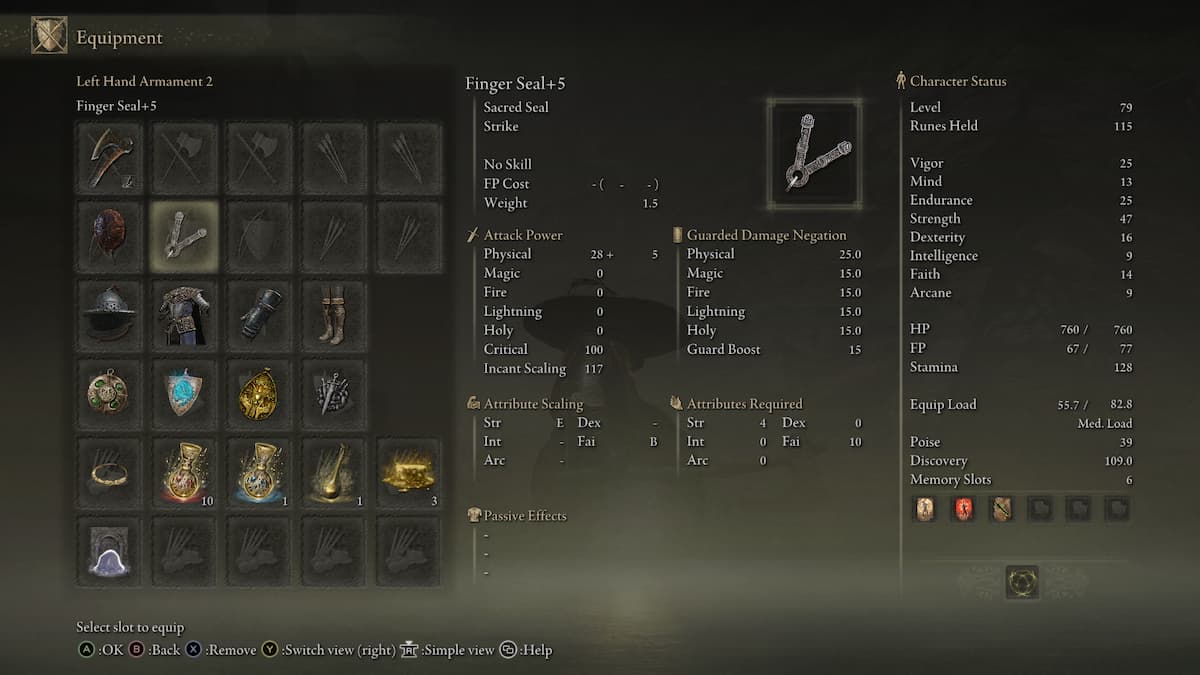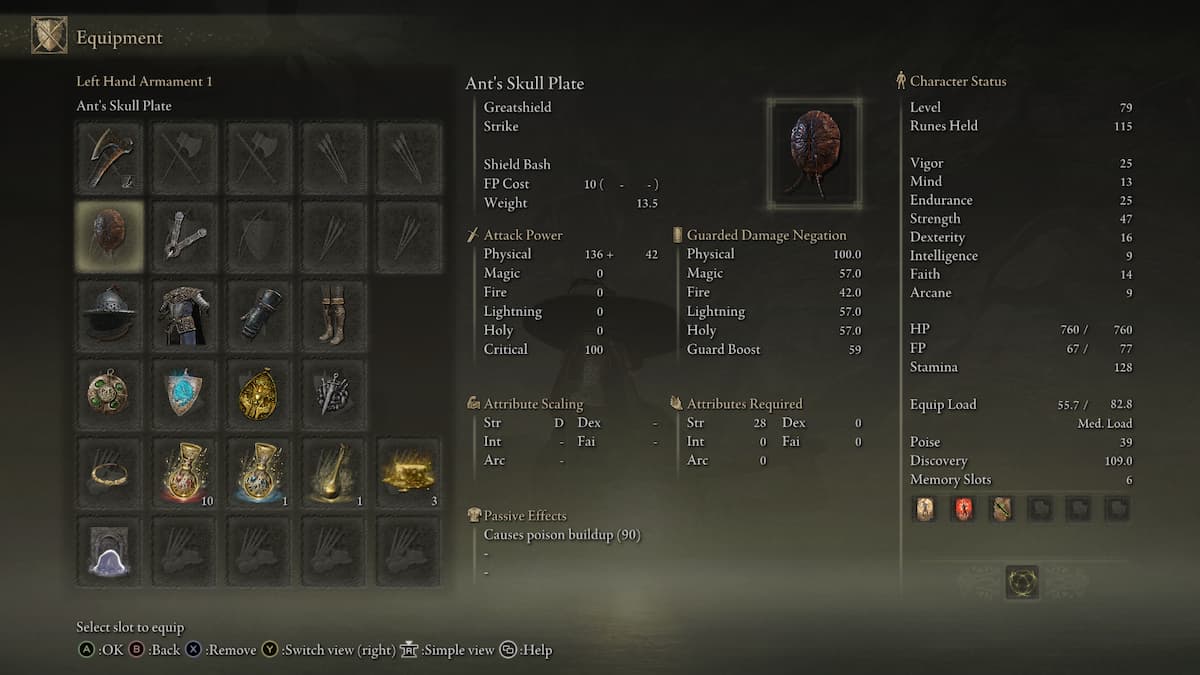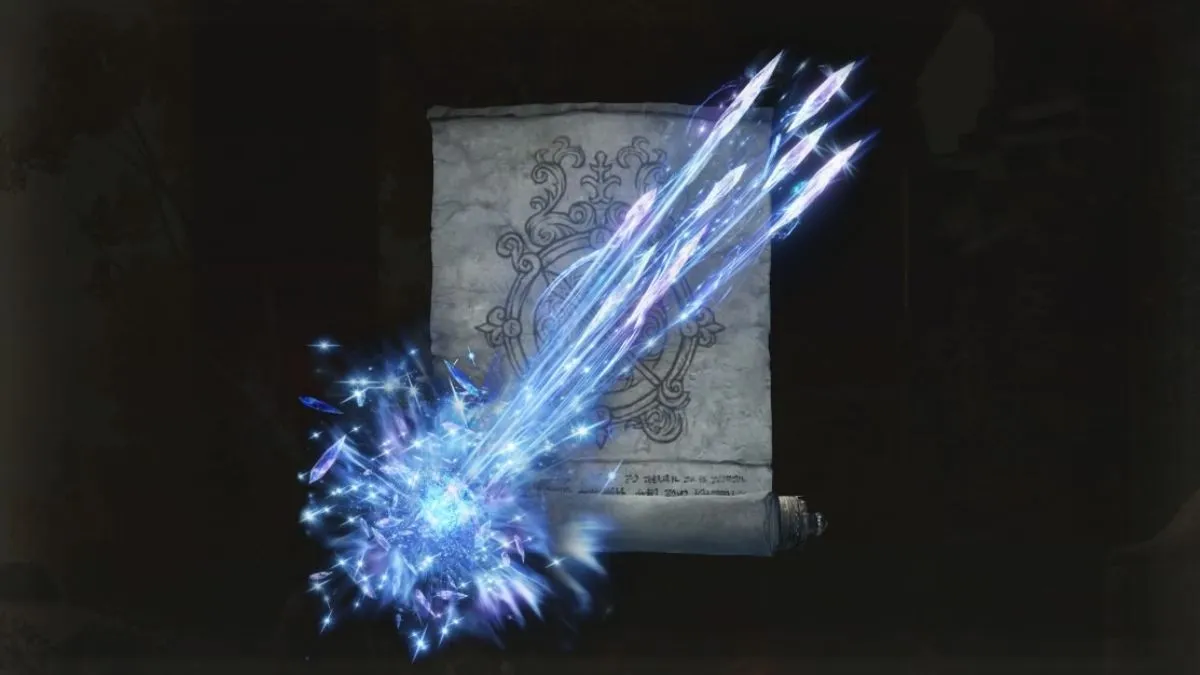If you’re new to Soulsbourne games, you may be overwhelmed with the number of stats to keep track of, especially when trying to decide what weapons and shields you’ll be wearing. Why can’t you wield Godrick’s Axe? What does “Guarded Damage Negation” mean for a weapon? All of these and more will be explained here once you learn how to interpret weapon stats in Elden Ring.
Weapon Stats In Elden Ring
First off, if you ever forget what the stats do, you can always press the Help button on a stat screen (usually bound to Select or the two squares button on PC/Xbox.) This will allow you to select a stat and gain more information about it. Weapons and armor have six categories to pay attention to weight, attack power, guarded damage negation, attribute scaling, attributes required, and passive effects. Let’s break down each category:
Weight
Weight is what it says — how heavy your armaments are. Heavier weapons are slower to chain attacks, but heavy damage or wide, sweeping attack ranges often come to compensate. Furthermore, the heavier your total weight, the more it affects your movement and roll speed. If you’re under 30% equip load, you can fast roll, 31% to 70% is a medium roll, and 71% to 100% is a heavy roll. If you go over 100% encumbrance, you cannot roll at all. Your movement speed and sprinting also slow down the more weight you carry.

Attack Power and Guarded Damage Negation
The Attack Power section denotes exactly how much damage your weapon will do and the type of damage it will inflict. In the example above, the Highland Axe will deal 224 Physical damage, plus an additional 164 Physical damage due to its Heavy subtype. This scales off the Strength stat, which we will get into in the next section. However, you will often find weapons that deal Physical damage and an additional elemental type, such as Magic, Fire, Lightning, or Holy. These elements can help you deal additional damage to enemies weak against them or circumvent enemies who are blocking all of your physical attacks.
Guarded Damage Negation shows what percentage of damage will be blocked when guarding with the item in question. This exists on weapons and shields — when you two-hand a weapon and press L1, you block with it. Using the example above, the Highland Axe will negate 47% of Physical damage when blocking, but a mere 31% of other elemental damages otherwise. This stat is more important on shields — a good shield to have throughout your playthrough of Elden Ring is any shield that negates 100% of Physical damage.

Attribute Scaling and Attributes Required
Attribute Scaling can be thought of as how well you will perform with that weapon based on your attributes. For example, the Finger Seal above has a Strength Scaling of E, which means it will perform poorly if you were to punch people with it. However, it has a Faith Scaling of B, which means that any incantations cast with the Finger Seal will do much more damage if your Faith stat is high enough. In general, the higher the Attribute Scaling, and the higher the Attribute, the more damage you will do.
Attributes Required lets you know the bare minimum required to wield the weapon or shield in question. While you can wield a weapon that you don’t meet the minimum stat check for, you will deal severely reduced damage with it and be unable to use any Arts associated with it or cast spells fully.

Passive Effects
This section simply tells you what passives are associated with the item in question. Most weapons and shields do not have any passive effects, but some of the most powerful items do. In the example above, the Ant’s Skull Plate causes a poison and scarlet rot buildup of 90 every time you equip it — a small price to pay for a very effective shield that blocks 100% physical damage and half of the other elemental damage. It’s always worth checking to see what passives are in effect for any new pieces of gear you find.







Published: Mar 2, 2022 01:08 am